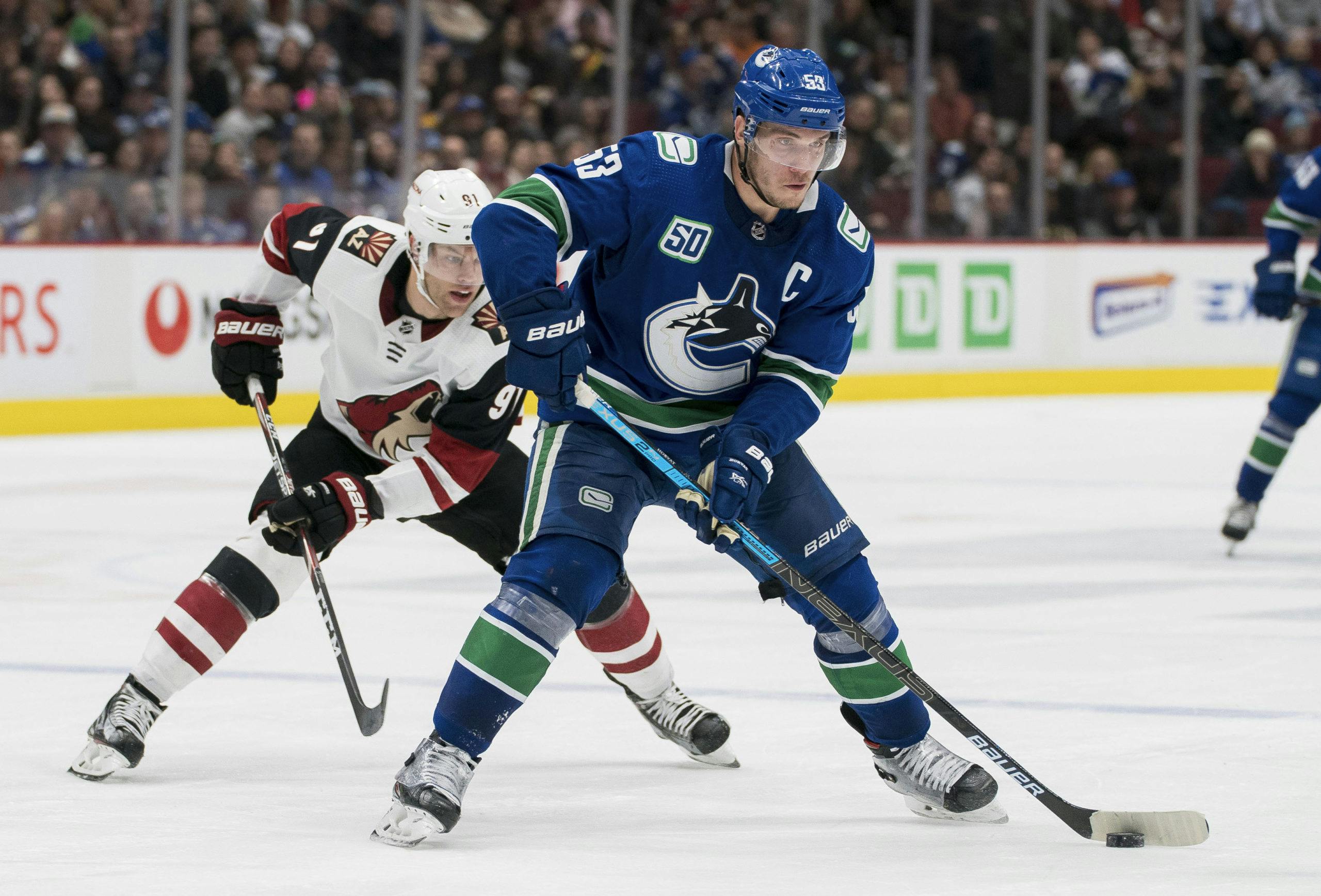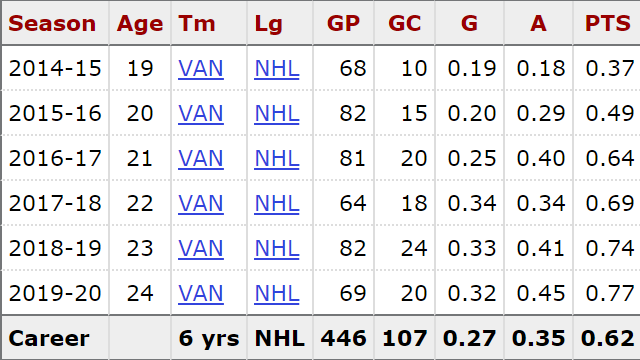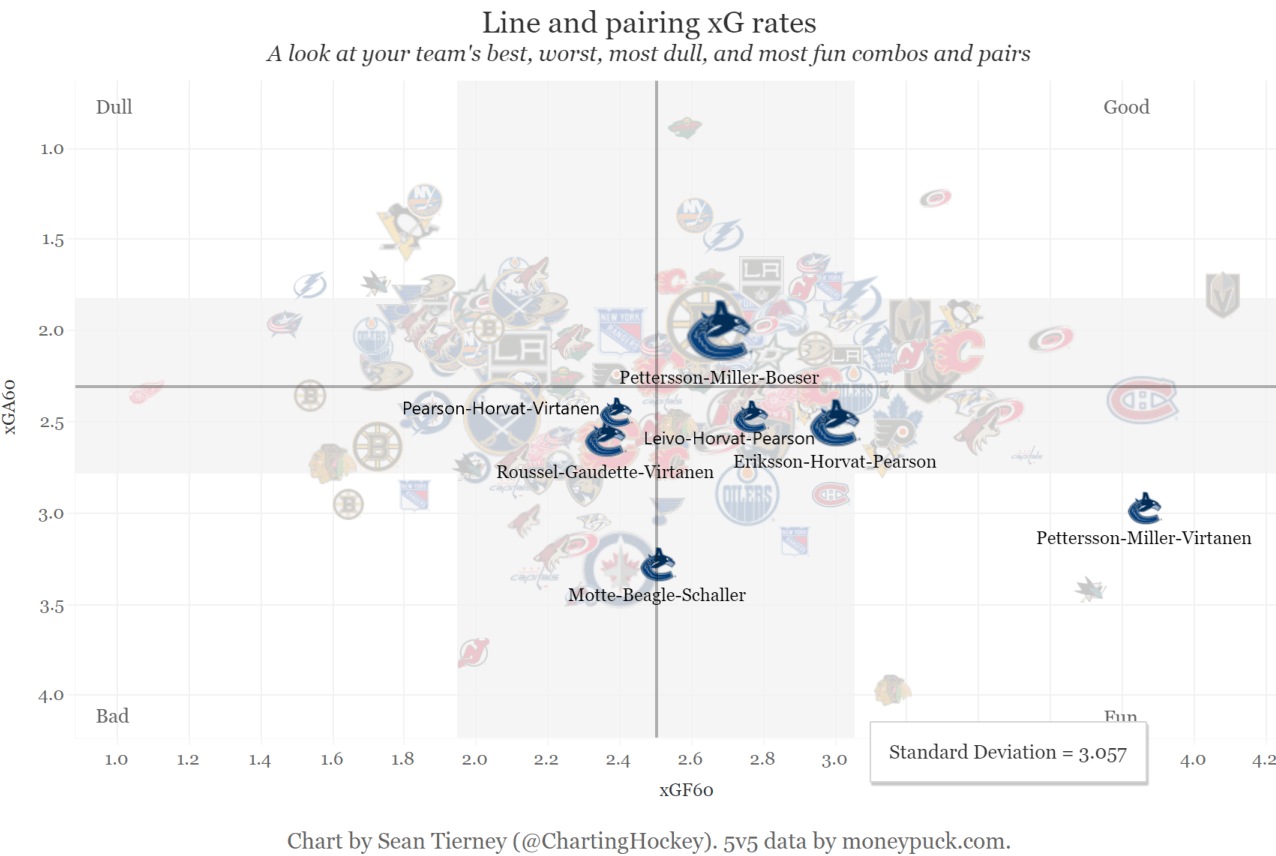Year (So Far) In Review: Bo Horvat’s First Season as Captain

It was a banner season for Bo Horvat in 2019-20 both on and off the ice. Horvat was on pace to set career highs in both assists and points before the onset of the COVID-19 pandemic halted the NHL season, and and wife Holly announced in January that they are expecting their first child. To cap it all off, he was also named the 14th captain in franchise history, accepting the C from Henrik and Daniel Sedin in a special ceremony prior to the team’s home opener. It also gave Bo the opportunity to lead the team through the year long 50th season celebration. The decision didn’t come as a surprise to anyone, as Horvat has shown through his career and this season that he’s the right man for the job.
Failed to load video.
On the ice, Horvat seen his play rise and fall throughout the season as he struggled to find consistency early on. The rocky production in the beginning could have been attributed to acclimating to new linemates, the different powerplay personnel or the pressures that come along with captaining a playoff hopeful to their first postseason in years.
Horvat didn’t get too high or too low on his game and managed to finish the season with a career high points per game rate of 0.77. Good for a 63 point pace over a full season and 6th highest on the team.

Via Hockeyreference.com
It’s promising to see Horvat continually find ways to hit the scoresheet. This is especially true at even strength, where he was the 3rd highest point producing Canuck, behind only J.T. Miller and Elias Pettersson. He also continued to demonstrate his nose for the net, as the chart below illustrates.

Via Chartinghockey.com
His ability to drive to high danger areas and create chances for himself is something Canuck fans have become familiar. It was encouraging to see that part of his game continue to grow as he ranked first on the Canucks in total high danger shot attempts (HDCF) and HDCF/60.
While JT Miller and Brock Boeser spent a bulk of their time flanking Elias Pettersson, Bo was left to drive his own line. In the chart below, we can see that the most used line combination featuring Horvat was with Loui Eriksson and Tanner Pearson.

That line played over 256 even strength minutes together and finished the truncated season with a positive expected goal differential, posting a 3.0 xGF/60 and 2.5 xGA/60 at 5-on-5. It wasn’t a flashy line, but for the most part, they had a positive impact at even-strength.
Horvat spent most of the year with Pearson by his side, with fans getting a more extended look at a combo that received good reviews at the end of last season. Travis Green didn’t mess with a good thing and kept them together for most of the year while swapping a number of wingers in and out, including players like Jake Virtanen and Josh Leivo. Horvat’s game appeared to gel well with Leivo’s for the short amount of time they were together, and it’s a shame we didn’t get to see more of a combo that yielded a +0.3xG/60 differential. Unfortunately, the opposite could be said for the line of Virtanen-Horvat-Pearson, which was never really able to catch fire.
On the man advantage, Bo tallied a career high 12 goals, as he settled into his role among the new PP personnel. His finishing success on the PP seemed like a far cry from the beginning of the season, when he spent time on the second unit as Newell Brown and the coaching staff experimented with new pieces in the lineup.
Individually, despite his point rate reaching a career high, it wasn’t Horvat’s best season.

The RAPM (regularized adjusted plus-minus) chart from Evolving-hockey.com shows us that, while his offensive play driving was good, his defensive game severely lacked. Especially for a player who’s eating as many key minutes as Bo does.
For reasons mentioned in my prior CanucksArmy pieces, RAPM is the best measure of an individual player’s overall impact on both ends of the ice. It gives us league context to Horvat’s offensive and defensive impacts in digestible metrics. We can see from the chart that defensively, he wasn’t his best. In fact, he was below league average when it came to controlling xGA/60 (expected goals against) and CA/60 (Corsi against)Its not what you would expect from a player who’s known for his 200-foot game or taking key defensive faceoffs against the other team’s best lines.
For more context on how Horvat wasn’t able to meet the expected defensive standards we’ll take a look at his isolated impacts on shot rates and locations throughout his career.

From Hockeyviz.com
Simply put, you want your players putting up a positive value on the offense end of the chart and a negative value on the defensive end. This season, Horvat was able to create 6.5% more xG/60 than league average in the offensive end. Although he’s put up better numbers in the past this is still a fine rate. What’s more concerning is the 4.3% more xG/60 than league average allowed in his own end. This data from HockeyViz along with the previously RAPM chart clearly shows that Horvat had one of his worst defensive seasons.
This makes for a bit of a mixed bag when it comes to the captain’s season. While he didn’t perform up to defensive standards, he was still able to make positive impacts offensively. While it won’t go down as Horvat’s best season, 2019-20 has been the most important and the most special, and hopefully one he can build on in the years to come.
Recent articles from Michael Wagar





